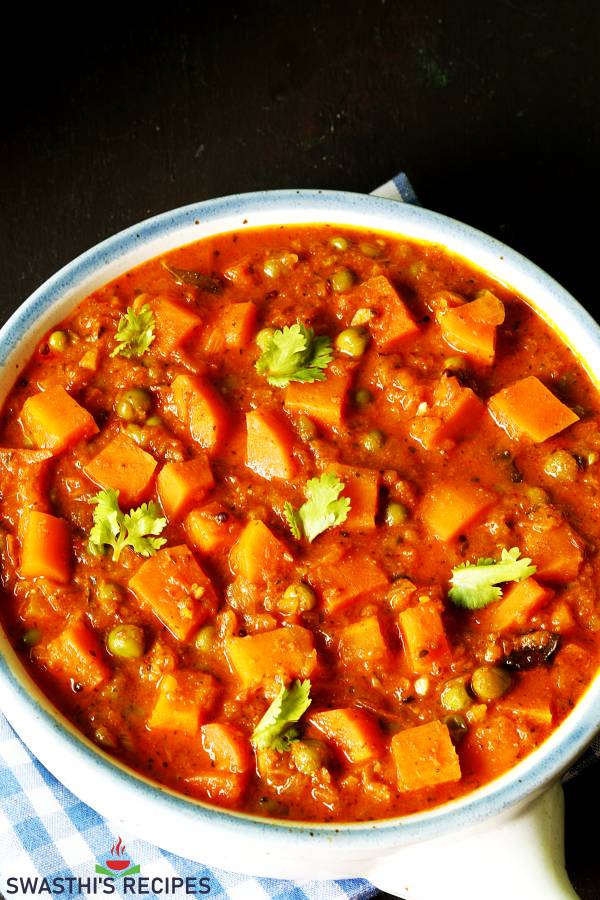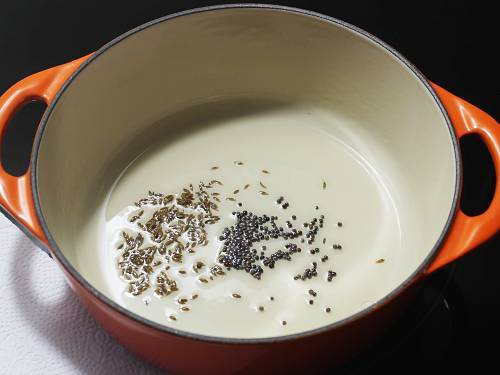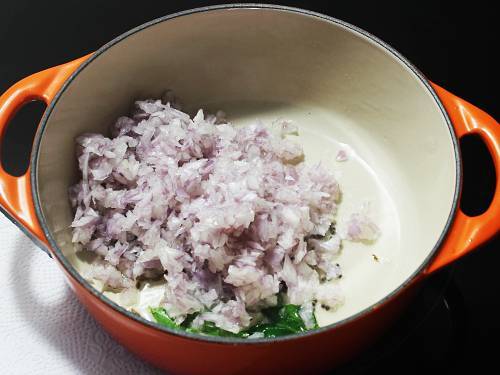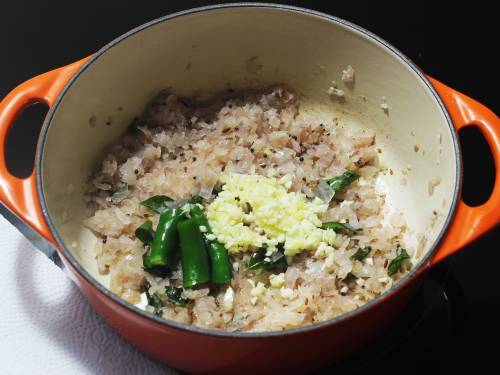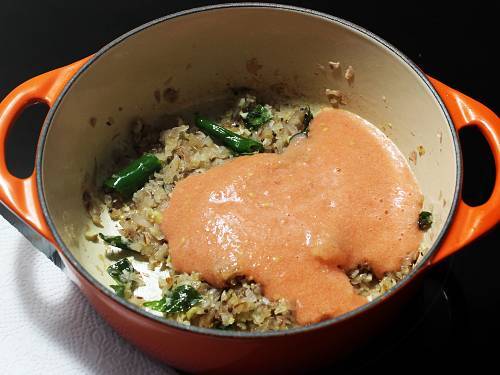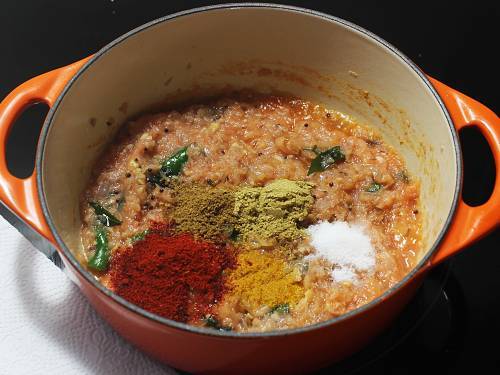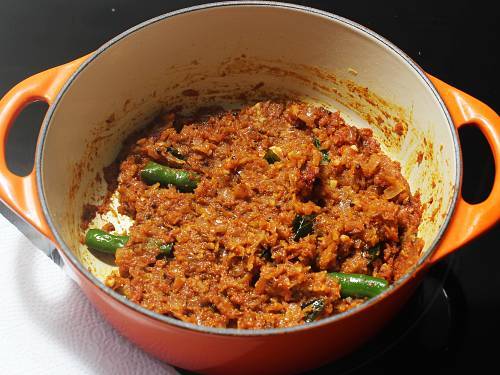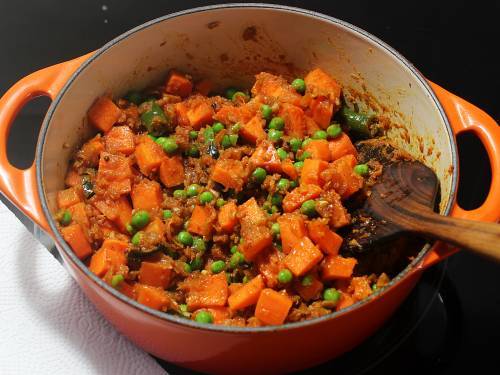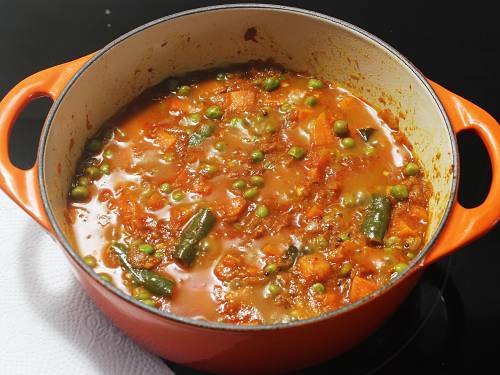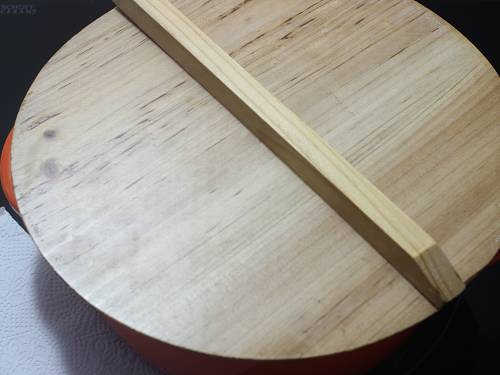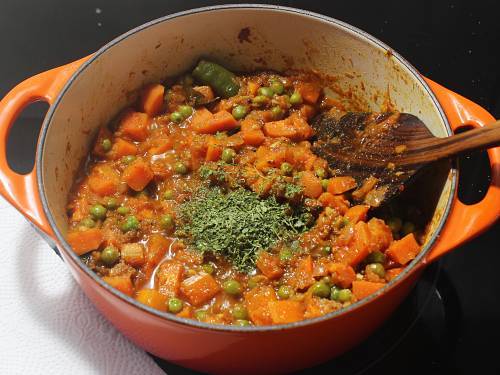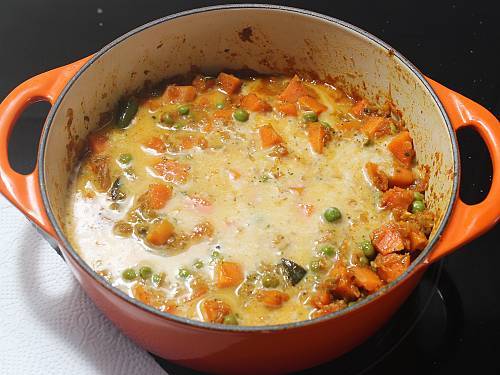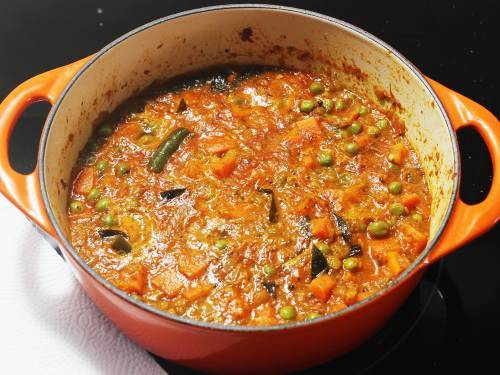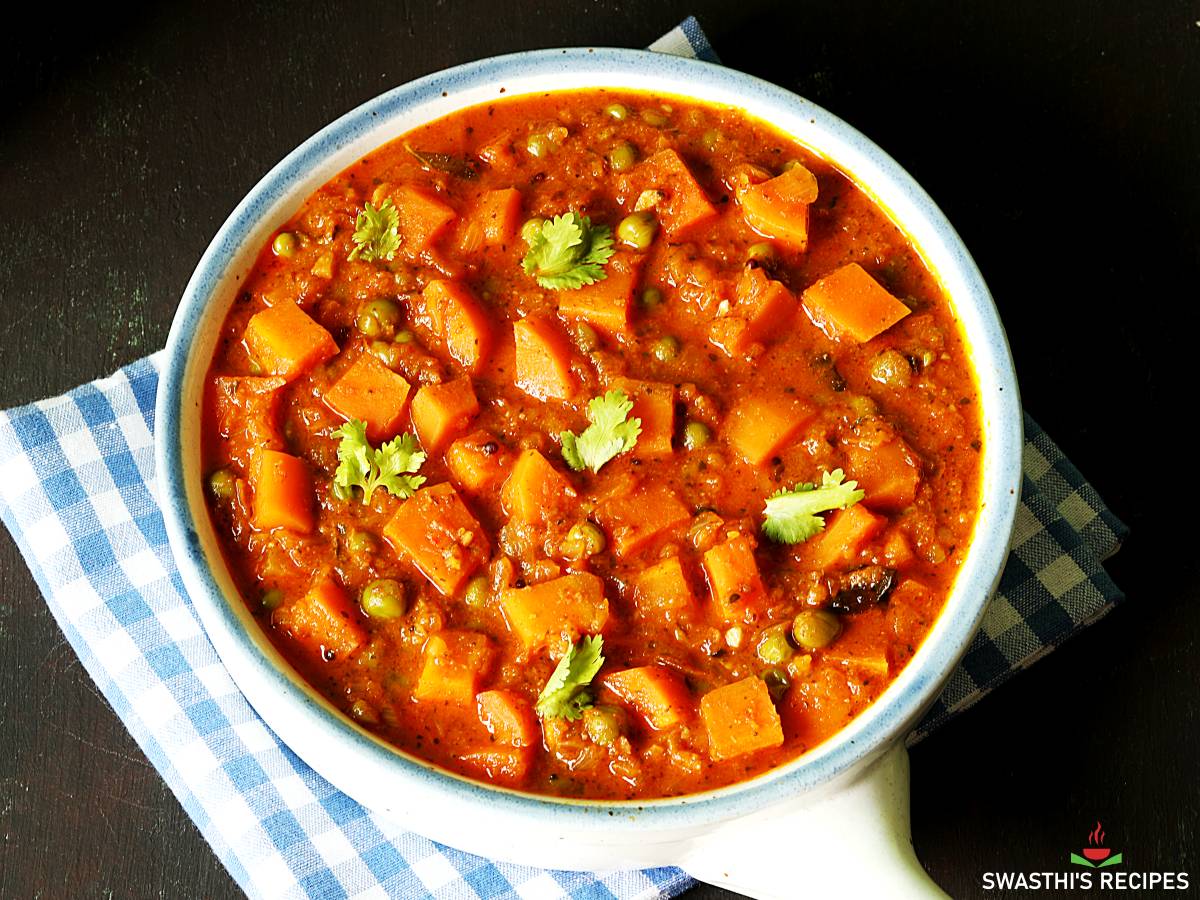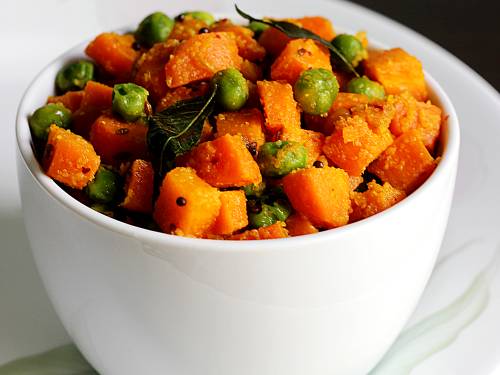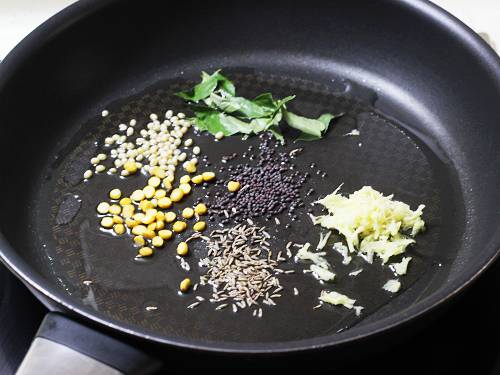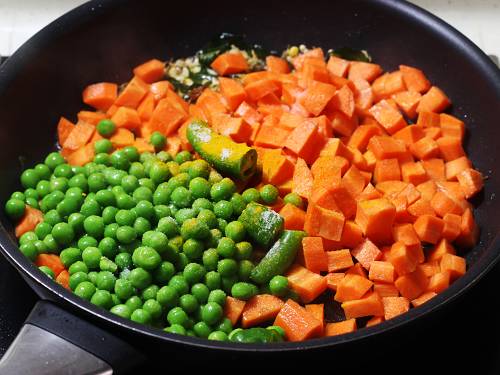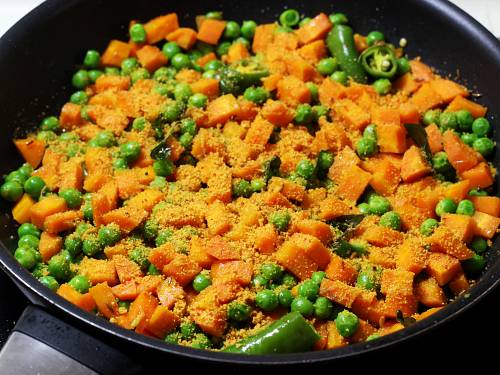https://10yumrecipe.blogspot.com
Modak recipe – Modak are sweet stuffed dumplings offered to Lord Ganesha as prasad / naivedyam during Ganesh Chaturthi puja. Some people also make these for the Sankasti chaturthi puja every month. Lord Ganesha loves modak hence he is also called as modakapriya, one of the 108 names mentioned in the Ganesha Ashtothram. Kudumu, kadubu,modakam or kozhukattai are the other names for modak.
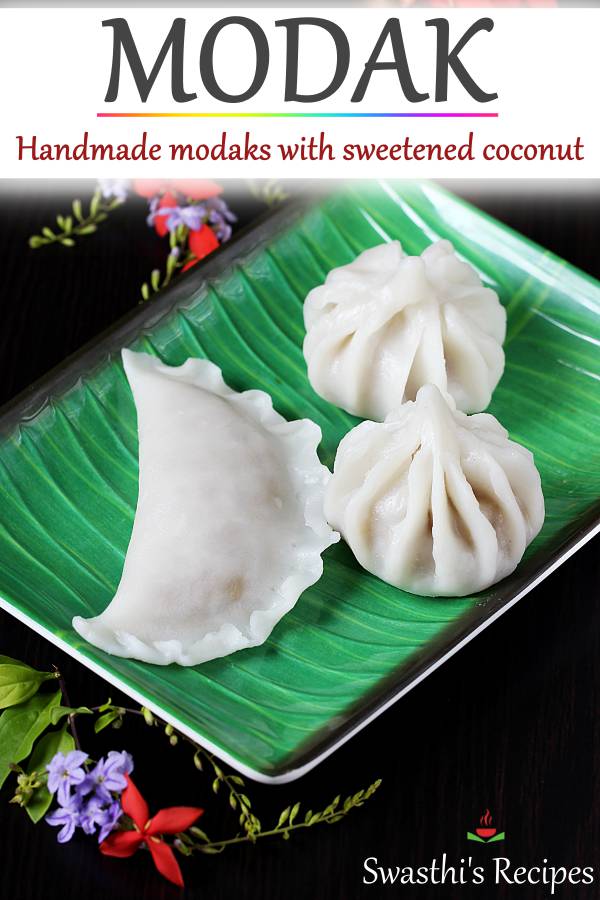
Ganesha, the son of Lord Shiva & Goddess Parvathi is the Hindu deity of Wisdom & intellect. He is revered as the remover of obstacles in life. Hence most people offer their prayers to Lord Ganesha even on regular days before their daily routine begins.
Vinayaka chaturthi or Ganesh chaturthi is a festival celebrating the birth of Lord Ganesha. It is said that the Lord loves modak so these are made in every home celebrating this special day.
What is modak?
Modak are Maharashtrian festive dumplings made of rice flour dough & a sweet coconut jaggery filling. Traditionally these sweet dumplings are handmade, filled and then steamed.
The filling is delicately flavored with cardamom powder and sometimes even with nutmeg.
Modaks are also made in many other states with different fillings like sesame jaggery, chana dal jaggery or peanut jaggery. Some people also make the stuffing according to their family traditions.
In this post I have shown the coconut jaggery filling. This recipe makes 11 large modaks. If you have the tradition of offering 21 to the Lord, you can either make smaller modaks or simply double the recipe.
How to shape modak
There are 2 ways modaks can be made. One way is to use mould & the other to shape them with hand. Making modak using a mould is super easy. Modak moulds are easily available in the Indian market or Indian stores through out the year.
If you live in a country place where the moulds are not available then they can be handmade following my step-by-step photos. I have shown 2 ways to make them without mould.
I have shared a lot of tips for making perfect filling & perfect dough after the step by step photos. You can also check the video.
Step-by-step photos
Preparation for modak recipe
1. Heat a pan with 1 tsp ghee. I have not used poppy seeds but many people use them. If you prefer to use, add 1 tablespoon white poppy seeds and briefly fry them on a low flame for 30 to 60 seconds.
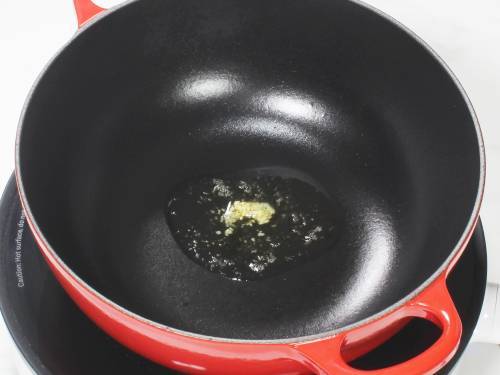
2. Add 2 cups or 200 grams grated fresh coconut.
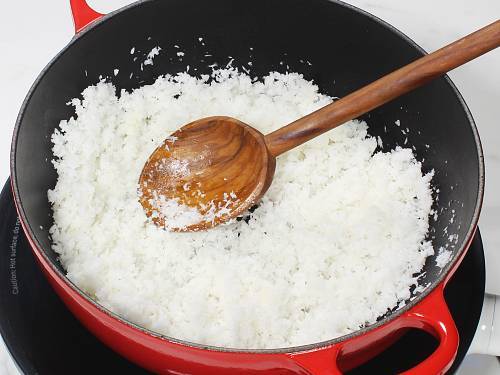
3. Next add ¾ to 1 cup jaggery. I used 1 cup (150 grams jaggery powder). If you prefer lesser sweet you may add ¾ cup.
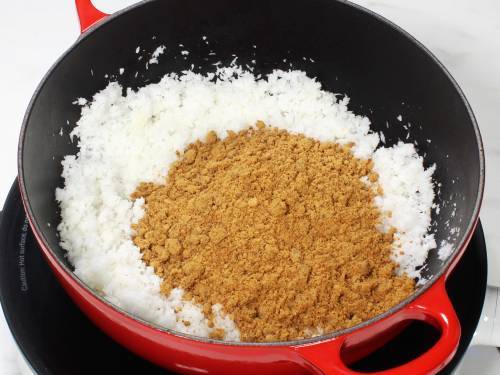
4. Stir and begin to cook on a medium flame. The mixture may turn gooey after a while depending on the kind of jaggery. Continue to cook until all of the excess moisture evaporates and begins to dry up. Add cardamom powder and nutmeg (optional). Avoid overcooking. Check video to know more. Turn off the stove. Set this aside to cool completely.
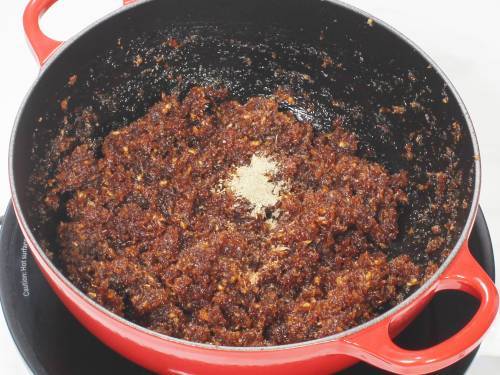
Making dough
5. Pour 1 cup water to a pot or pan. Add 1 pinch salt and 1 tsp ghee to the water. Bring it to a rolling boil.
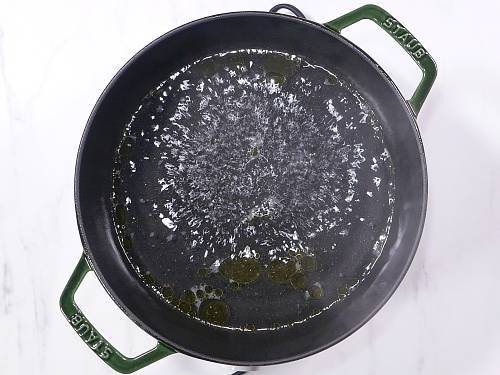
6. Turn the flame to low, add 1 cup flour (150 grams) and quickly mix well.
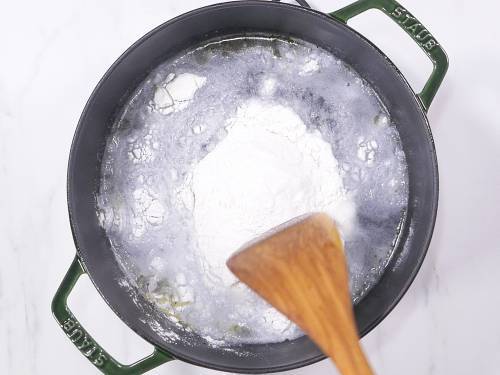
7. The flour turns to a lumpy mixture.
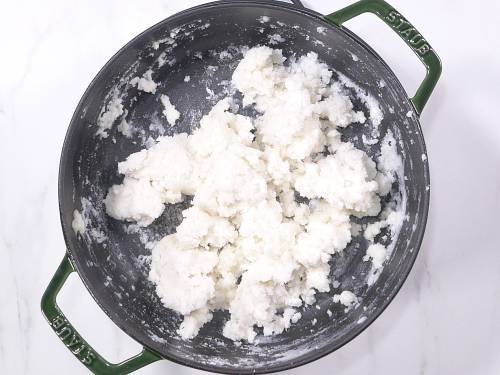
8. Cover and turn off the stove. Remove from the stove and let it steam in the residual heat. While this cools prepare your steamer and a basket. You can either grease the steaming basket or spread a muslin cloth.
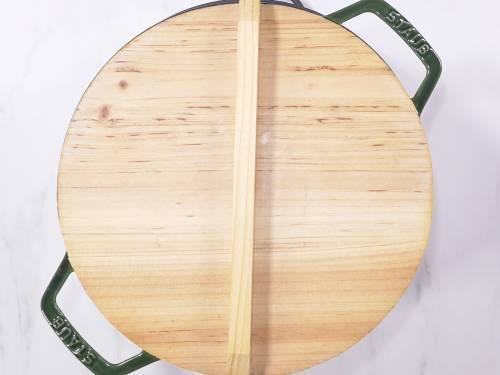
9. When the mixture cools down to slightly hot, transfer the mixture to a wide bowl. Do not allow it to cool down completely. The mixture will be crumbly and dry. If needed sprinkle little hot or warm water and knead it to a smooth crack-free & non-sticky dough. I use about 2 tablespoons hot water. Check video to know the right texture.
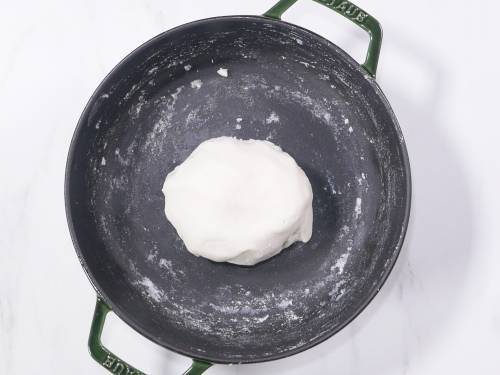
10. Divide the mixture to 11 parts. If using mould then divide according to the size of your mould. If you have small ones, then you can make 16 balls. With larger mould you will get only 9. I cannot give the accurate number as the moulds come in different sizes. Knead each one to soft ball. Cover them with a moist cloth.
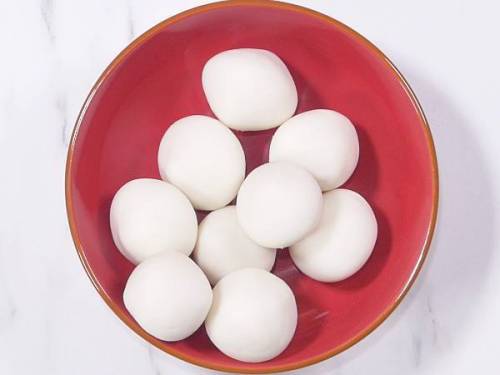
How to make modak without mould
11. Take a ball, dip your fingers in a bowl of water. Using your thumb make a dent in the center. Begin to spread the dough in a circular motion with your thumb and fore fingers using both hands.
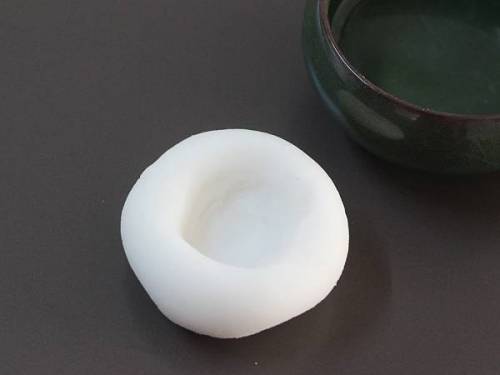
Dip your fingers in water as needed while you work on it. If the dough turns sticky, you can use ghee instead of water.
Method 1
12. We need a evenly shaped round puri. The edges have to be thinner than the center. With the help of thumb and forefinger gently pinch off very little dough to make a pleat on the outer side. With half to 3/4 inch apart you can make as many pleats as possible. Place 1 to 1.5 tbsp. cooled coconut jaggery mixture in the center.
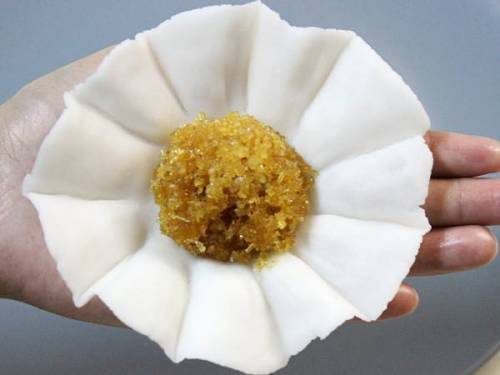
13. Bring together all the pleats gently and seal giving a good shape. Keep them aside on a greased steaming basket or moist cloth lined over a steam basket. (check picture below). Remember to keep the modaks covered with a damp cloth.
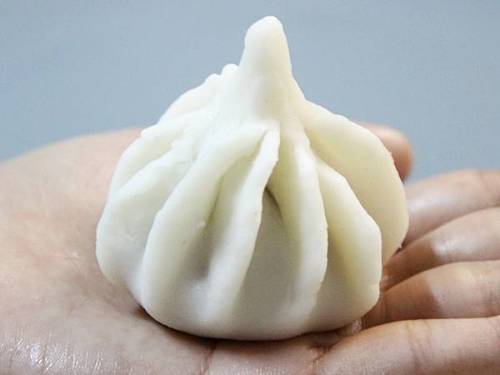
Method 2 of making modak
14. You can also make a cup shape out of the rice dough first and then pinch off little dough on the sides to make pleats. Put the filling in the center.
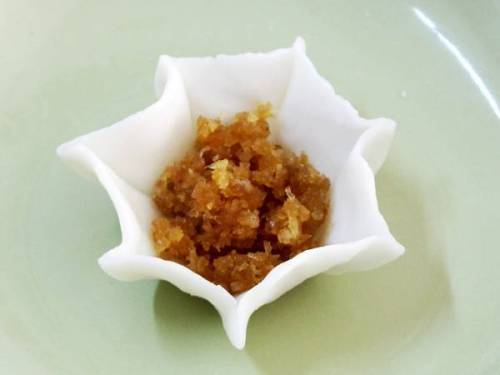
15. Then join the edges. But the first method I have shown is fairly easy for beginners.
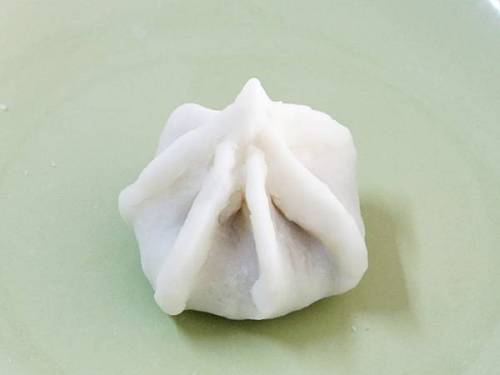
16. If you find the above methods difficult, you can try this one. You can also shape this like a Kadubu or karanji. Make a puri, place the coconut jaggery mixture on one half.
17. Cover with the other half. Seal off by pressing both the edges with moist fingers (dip fingers in water). Tuck in little dough from the edges to give a nice finish. You can also use a greased fork to give a nice design. Keep the modakams covered with a moist cloth.
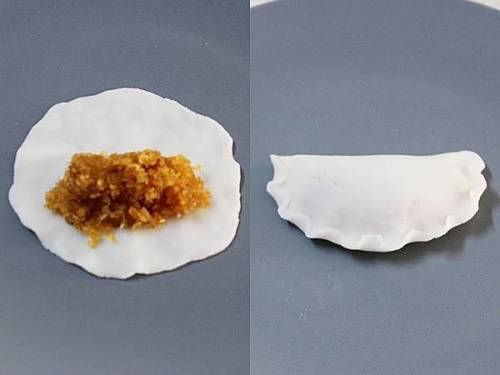
18. These were the handmade modaks before steaming.
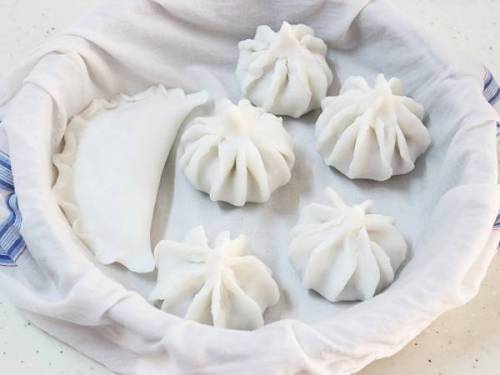
With mould
19. Grease your mould with ghee.
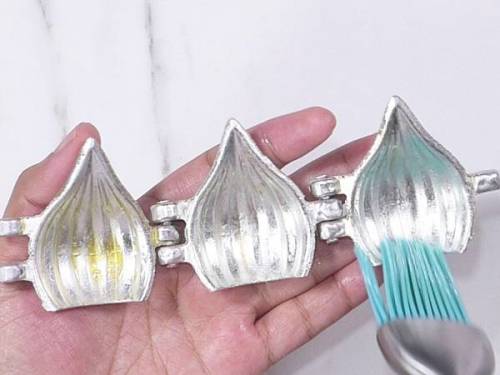
20. Close the mould and keep a dough ball inside. Press down the dough to the sides of the mould, making space in the center.
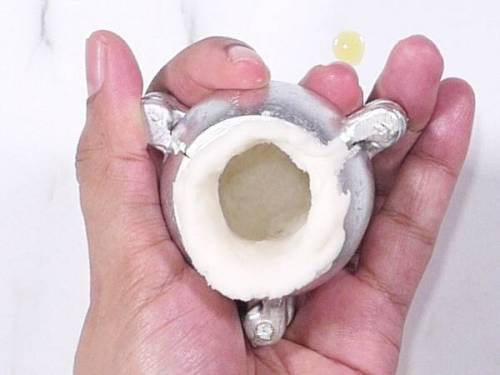
21. Press down the coconut filling gently.
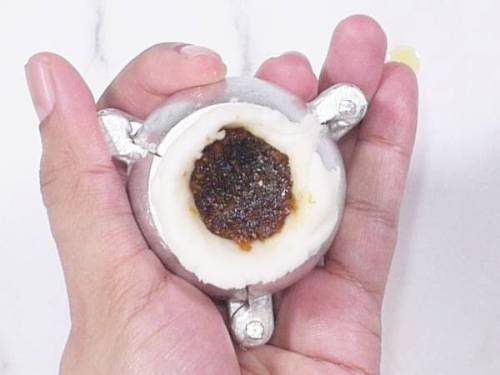
22. Seal the modak with the excess dough that comes out. Or you can also close the opening with more dough. Open the mould and remove the modak carefully. Always remember to keep them covered with a damp cloth until they go for steaming.
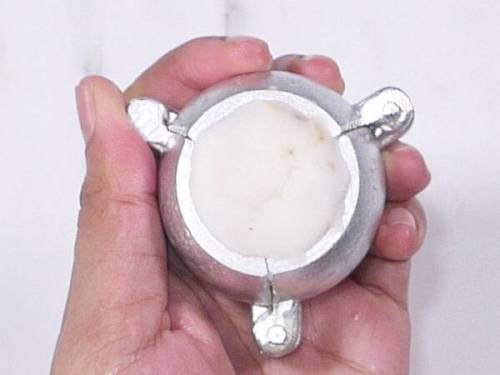
Steaming modak
23. On a medium high flame, bring 1.5 to 2 cups water to a rolling boil in a steamer. Grease the steam basket or Spread a thin cotton cloth in a wide bowl or a steam basket.
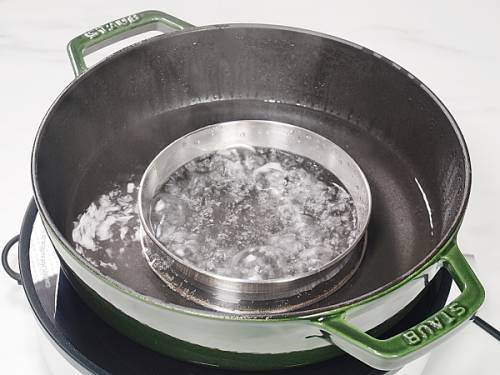
24. Place the modak in the basket and steam for 10 minutes. I sprinkled some saffron over them before steaming. Switch off and rest for a while.
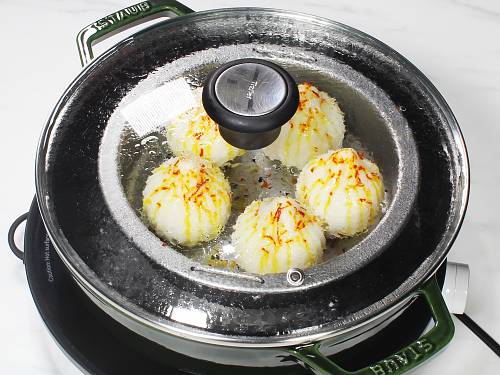
Offer steamed modak to Lord Ganesha.
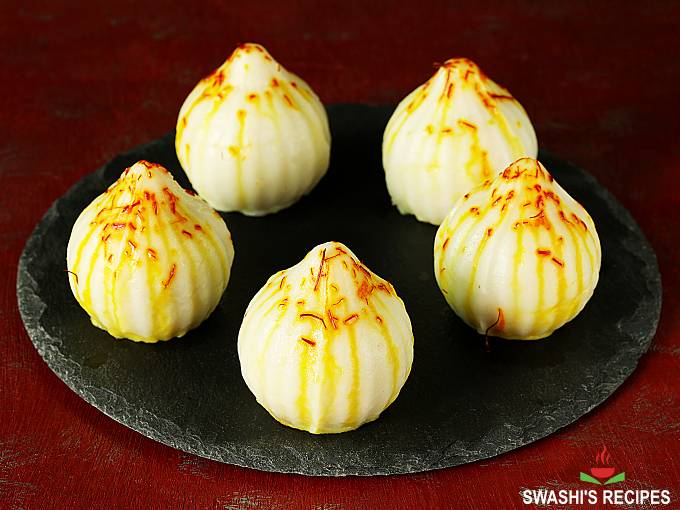
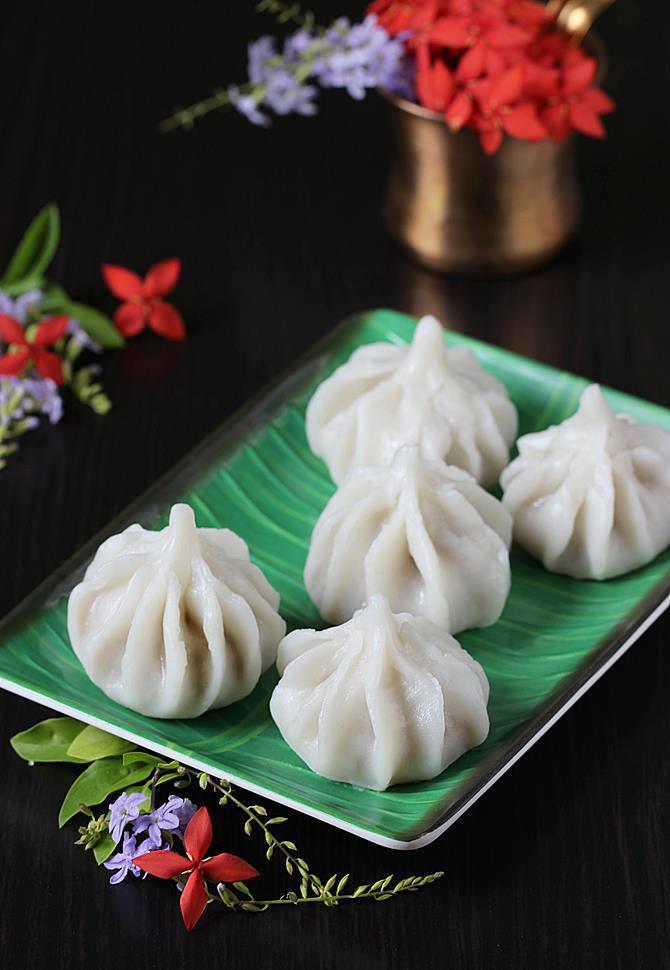
Tips to make perfect dough
Flour : water ratio – 1 cup rice flour usually needs a little over 1 cup water to make a perfect dough. It may take more but not less. So add 1 cup flour to 1 cup boiling water, mix and rest. Sprinkle 2 to 3 tablespoons more hot or warm water while kneading to get a smooth dough.
The quantity of water required depends on the kind of rice flour.
Kneading the dough properly with enough hot or warm water is the key to get soft modak covering. So feel free to sprinkle more water as required taking care not to add a lot. After kneading the rice flour dough has to be soft and crack free.
Always keep the dough covered with a damp cloth until it is used up. This prevents the dough from drying and cracking while shaping.
Troubleshooting dough
Dough cracks while shaping modaks: This means the dough is dry and needs some more moisture. Sprinkle some warm water and knead the dough.
Dough is sticky: If you follow the recipe correctly it is unlikely for the dough to become sticky. Sticky dough means there is more moisture in the dough, sprinkle 1 teaspoon rice flour to the dough and knead well again.
Tips to make the stuffing
Cook jaggery and fresh coconut until the mixture looks almost dry. Too much moisture in the mixture will ooze out melted jaggery while steaming the modaks.
Tips to shape the modak
Do not spread the rice dough too thin as the covering will break. Shaping modak with hand needs some practice. So try with a smaller batch first if you are a beginner.
Choosing ingredients
Rice flour: To make modak, fine & smooth rice flour is needed. It is the quality of flour that decides the texture of your modak. With fine flour they turn out smooth without any cracks. Most Indian grocery stores carry them and some brands even sell specific one labelled as modak flour or kozhukattai flour.
If you are skeptical about the store bought flour, sieve it just to ensure it is super fine.
We make modak with homemade flour. Making the rice flour at home does take some time as the rice needs to be soaked, drained and then ground in the grinder. Then lastly it is sieved.
Coconut is the key ingredient used to make the filling. If making for prashad/bhog or naivedyam we break a fresh coconut and then scrape it. However you may use frozen or fresh coconut.
Jaggery is the only sweetener I use to make modak. However if you live in a country where it is not available, then feel free to use light brown sugar. Make sure to use jaggery that is clean free from stones, debris or dust. You can also hand pick the dust particles and discard while you grate.
MODAK RECIPE | MODAKAM | HOW TO MAKE MODAK WITHOUT MOULD
INGREDIENTS (1 CUP = 240ML )
Sweet filling for modak recipe
- 2 cups grated coconut (fresh or frozen) (200 grams)
- 1 cup jaggery grated or powdered (125 to 150 grams)
- 4 green cardamomspowdered (½ teaspoon)
- ⅛ teaspoon nutmeg powder(optional)
- 1 teaspoon GHEE
For the outer cover
- 1 cup rice flour (fine flour) (150 grams, Refer notes)
- 1 cup water (2 to 3 tablespoons more to knead)
- 1 pinch salt
- 1 teaspoon GHEE
For greasing
- 1 teaspoon GHEE (use as needed)
INSTRUCTIONS
Making sweet filling for modak recipe
- Add 1 teaspoon ghee to a hot pan.
- Saute together jaggery and coconut until both blend well and the mixture turns thick. Do not overcook. There should be no excess moisture in the pan. (check video to know consistency)
- Add cardamom powder and nutmeg. Turn off the stove and cool this completely.
Making dough
- Bring 1 cup water to a rolling boil along with salt and ghee.
- Regulate the flame to low, then add the flour and give a good mix. Ignore the dough looking dry and crumbly at this stage.
- Turn off the stove and cover the pot. Set aside and let the dough steam in the residual heat. Rest until the temperature comes down a bit.
- While the mixture is still slightly hot, knead it to a soft non-sticky yet smooth crack-free dough. The mixture will look dry so sprinkle little hot or warm water and knead. I sprinkle about 2 to 3 tablespoons at this stage. (check video or step-by-step photos)
- Divide the dough to make 11 equal sized balls. Keep the balls covered with a damp cloth until you finish making all of the modak.
- Ensure the coconut filling has cooled down completely before you begin to make the modak. Take each ball to your palm and smoothen them to a crack-free and soft ball.
How to make modak with mould
- Grease the mould lightly with ghee. Close the mould and keep a dough ball inside. Press with your finger to spread the dough towards the sides of the mould.
- Then stuff the sweet coconut and seal the modak carefully. (Check video or step-by-step pictures). Open the mould and transfer the modak to a greased steam basket.
How to make handmade modak
- Take a ball and make a dent in the center. Dip your fingers in water.
- In a circular motion begin to spread the dough to make a thin disc using thumb and forefingers on both the hands.
- Pinch off little dough on the outer side of the disc to make pleats at a distance of ½ to ¾ inch. (refer pics above).
- If the edges break, keep dipping your fingers in water and moisten the dough.
- Place 1 to 1½ tbsp coconut mixture in the center.
- Bring together all the pleats and join them carefully. If needed moisten the fingers and join them.
Steaming
- Next place all the modak in a greased steam basket. You can skip greasing and just spread a moist cloth in the steam basket. You can also sprinkle some saffron if you like.
- Place a trivet in a steamer or pot. Pour 1½ cups water & bring to a rolling boil on a medium high heat. Place the steam basket inside and steam the modaks for 10 minutes.
- Pour few drops of ghee over the modaks. Offer them to Lord Ganesha and serve as prashad.
NUTRITION (estimation only)
NOTES
- Wash & soak 3/4 to 1 cup raw rice in water for at least 2 hours. Drain the rice to a colander and leave it for 30 mins.
- Spread on a cotton cloth and air dry or fan dry for 30 to 40 mins. When the rice is slightly moist then powder them in a mixer.
- Sieve it through a fine flour sieve. Dry the flour in a tray until it turns completely dry. It may take few hours.
- Refrigerate and use within 2 weeks.
Alternative quantities provided in the recipe card are for 1x only, original recipe.
